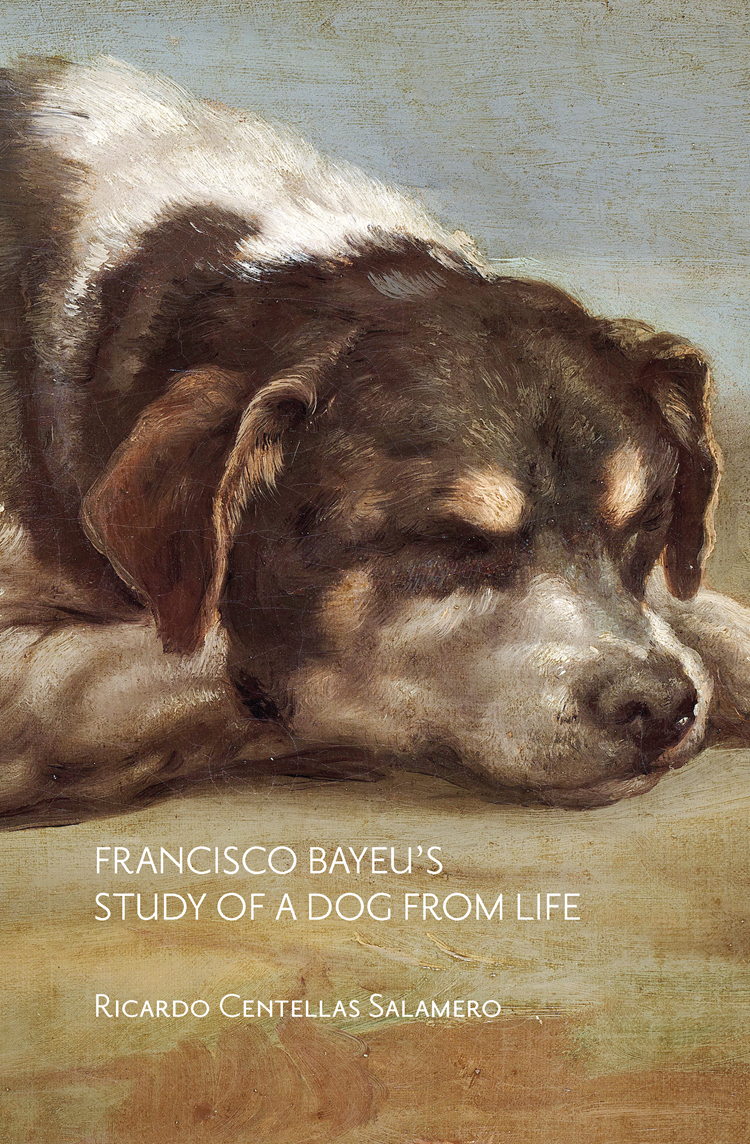Author
Ricardo Centellas Salamero
Characteristics
128 pages; 50 color illustrations; flapped paperback; 16 x 24 cm
Publication
English; translated by Laura Suffield; preface by Jonathan Ruffer; jointly published with the Spanish Gallery; 2024
ISBN
978-84-18760-51-8
Price
€22,12
Buy on our site and save 5% on this book until April 30
(coupon code: DÍA DEL LIBRO)
Francisco Bayeu (1734–1795) was the most influential painter at the Spanish court in the last quarter of the eighteenth century. Painter to Charles III and IV and director of the Real Academia de Bellas Artes de San Fernando, he is perhaps remembered more for his family connections with Francisco de Goya than for his outstanding quality as an artist. The oil in the Spanish Gallery, Study of a Dog from Life (1783–84) is a masterpiece, a type of animal portrait exceptional in the history of Spanish painting, comparable to the naturalistic works by other European masters including Jacopo Bassano, Guercino, Paulus Potter, Jean-Baptiste Oudry and George Stubbs.
Beginning with an introduction to the artist’s life and the early influence of Corrado Giaquinto and Anton Raphael Mengs – the two painters who most profoundly left their mark on Bayeu – this book studies the importance of the depiction of dogs in his visual repertoire, particularly with regard to the Bishop Auckland portrait, in which, significantly, the style reflects that of the great Spanish master of the Golden Age, Diego Velázquez. Succeeding chapters chart Bayeu’s rise to fame and fortune through a series of frescoes and portraits by royal commission before the focus shifts to the relationship between the Study of a Dog from Life and the programme for the redecoration of Toledo cathedral. The author’s detailed examination of the canvas and its history unveils a complex creative process, while the fact that the painting remained in Bayeu’s possession until his death is shown to be due to both its utility as a modello and the particular appreciation he felt for it. This circumstance deprived the work of the critical acclaim it deserved during his lifetime and which it finally receives here.
Ricardo Centellas Salamero, an art historian and state employee in the field of cultural management, is responsible for the Museo-Casa natal de Goya and the Museo del Grabado de Goya. He was previously curator of the Palacio de la Aljafería in Zaragoza, declared a UNESCO World Heritage Site in 2001. He has curated and organised more than a hundred exhibitions, including Goya and his Academic Beginnings (1996) and Spanish Drawing from the Renaissance to Goya (2008). He has published studies and edited books and catalogues on art of the period of the Bayeu–Goya family.

